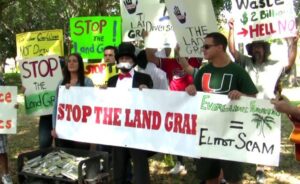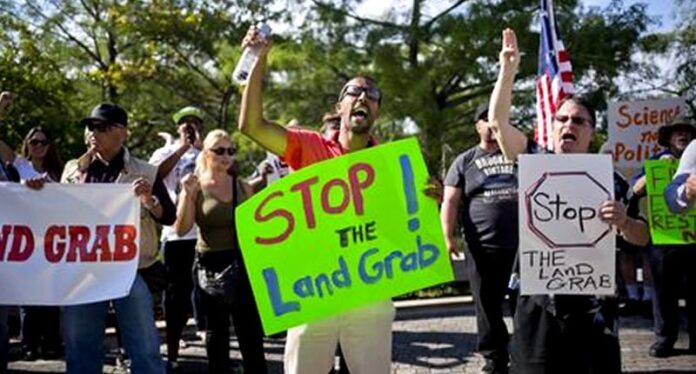The Florida Everglades is one of the nations greatest natural resources, and an integral part of Florida’s natural habitat. Run-off water from Lake Okeechobee flows south into the Everglades to sustain the ecosystem and fill the Florida aquifers.
Land speculators have been eager to acquire this swampland around Lake Okeechobee and develop it into residential communities, for centuries, but the constantly moving stream of water flowing from Lake Okeechobee which fed the Florida estuaries with a much needed supply of water, also made real estate development impossible in those areas, so federal and state governments stepped-in to help drain the Everglades and make it suitable for land development, which subsequently doomed the Everglades ecosystem and strained Florida’s water resources.
The federal Overflowed Lands Act, passed by Congress in 1850, gave the state of Florida title to all swamped and submerged land that it could reclaim. With the passage of the Overflowed Lands Act, the Florida land-grab had begun. The Florida state legislature then encouraged development of land near lake Okeechobee, at the northern end of the Everglades, in an effort to divert the run-off water from Lake Okeechobee and dry-up all land south of the lake. A state agency called the Internal Improvement Fun (IIF) was created to encourage private investors to help drain the land south of the lake. The project ended up being much more difficult than expected so the federal government came to the states rescue in the 1920’s to finish the job of drying out the Everglades.

In addition to the Central and Southern Florida Project of 1948, a Comprehensive Everglades Restoration Plan was enacted in 2000, through the Water Resources Restoration Act, to augment the C&SF and make additional improvements to the existing plan of restoring the Everglades – with federal funding and expertise. The Comprehensive Everglades Restoration Plan allocated funding and a plan of action to restore the Everglades over a 30-year period, at a cost of over $5 billion. One of the goals of the Everglades Restoration Plan is to capture fresh water that now flows, unused, into the Atlantic Ocean and the Gulf of Mexico and divert it back into the Everglades National Park where the water will be devoted to environmental restoration instead of being discarded out to sea.
Although a solid plan is already in place to protect and restore the everglades, a new plan has been devised to purchase $500 million of property from Florida landowners and agricultural companies so that Florida politicians can try a different approach to restoring the Everglades, at taxpayer expense, and at a tremendous risk to Florida residents, both economically and environmentally.
Tallahassee power brokers and lobbyists are working feverishly to convince lawmakers to purchase the Everglades swampland in the current legislative session that ends in May, which could hinder the federal plan to restore the Everglades, and could jeopardize Florida’s future water and wildlife resources and strain an already burdened state budget.
